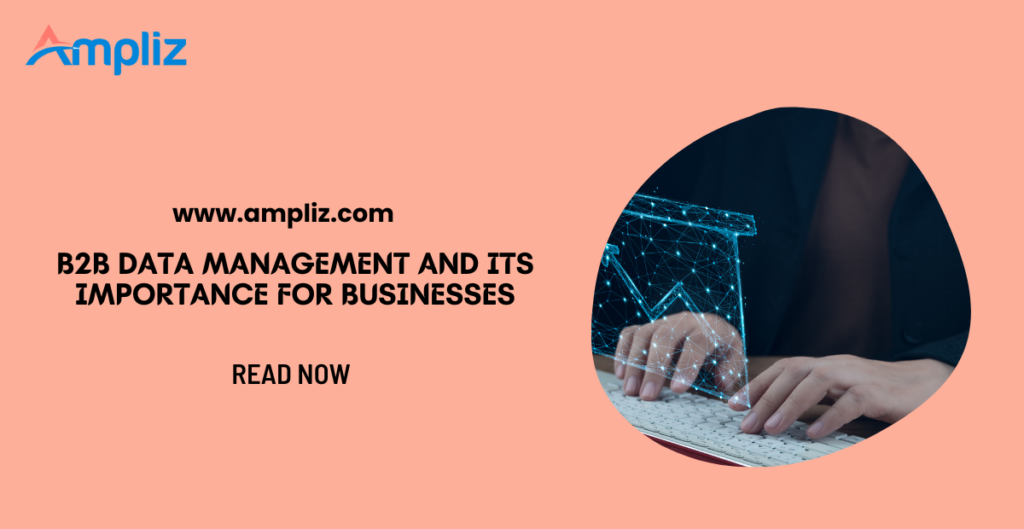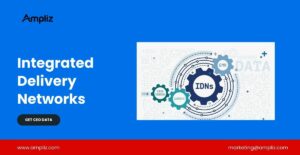In the digital age, data emerges as the most prized possession for any business. While organizations are gradually awakening to the significance of adept B2B data handling, a substantial distance remains to cover. The popular notion of ‘data is the new oil’ has been overly used within the B2B sphere, diminishing its impact.
Consequently, as per a recent study by McKinsey, “86% of businesses acknowledge the room for enhancement in B2B data management.” With a wealth of valuable data available, businesses must establish a well-defined B2B data management strategy to optimize its benefits.
What is B2B Data Management?
In simple terms, B2B data management involves the structured handling of customer data, including storage, collection, management, and security. Companies employ various practices to analyze this data strategically and gain insights into customer preferences and buyer profiles.
Historically, businesses mistakenly believed that merely storing customer data sufficed as a data strategy, but this changed with the rise of big data. At one point, B2B data management was as basic as maintaining a CSV file. However, times have changed. With the projected daily global data volume expected to reach 463 exabytes by 2025 (World Economic Forum, High Scalability), relying solely on CSV files for data management is inadequate. To modernize their data architecture, many organizations are considering an Oracle to Snowflake migration to leverage advanced cloud capabilities and improve scalability and performance. To kick off an effective B2B data management approach, businesses should:
- Organize customer data systematically
- Adopt a quality CRM system
- Automate tasks using CRM tools
- Regularly conduct data cleansing within the CRM system
Issues like “poor B2B data quality” or simply “bad data” lead to significant resource wastage, email bounces, and missed opportunities, damaging any brand’s reputation. To protect your brand from such consequences, prioritizing B2B data management is essential.
Who Constructs a B2B Customer Data Model?
Managing customer information’s accuracy and quality within an organization can vary significantly based on the individuals responsible. Typically, at least two individuals handle this responsibility in any business: one from the revenue or go-to-market (GTM) side and another from the product side.
Hence, if you hold a position like revenue operations, sales operations, marketing operations, or customer success operations, you likely have the potential or obligation to lead the development of a B2B customer data model. Similarly, if your title is head of technology, head of data, product lead, or growth product manager, you must also advocate for a collaborative effort in this area.
Techniques in B2B Data Integration
Challenges unique to B2B data integration involve dealing with different data formats, varying data quality, and intricate data mappings. Organizations have adopted essential techniques to tackle these obstacles like data mapping and transformation, ETL processes (extract, transform, load), application integration, and leveraging APIs (application programming interfaces).
Tradeline companies and data brokers supplying B2B contact lists simplify the business process by providing pre-built integrations with popular CRMs. This superior tradelines review guide can help you understand how tradeline companies work and how they can benefit your B2B data management strategy and build your business credit score.
Data Mapping
Data mapping refers to the process of establishing connections between data in various information systems. It serves as a key component of data integration services. For instance, linking data from an issue tracker to a work management system ensures consistency and synchronization across all information.
Data Transformation
Data transformation involves converting data from one structure or format to another. This step is essential for integrating data from diverse sources that may utilize different data structures. Businesses can utilize web services or APIs for data transformation, thereby enhancing their data integration capabilities.
Data Consolidation
Data consolidation involves merging data from multiple sources into a unified database. This process ensures analysis and decision-making are based on a comprehensive dataset. Sources like white papers or detailed reports from a company’s contact center can serve as valuable data inputs for consolidation.
Executing B2B Data Integration
B2B data integration implementation involves harmonizing data across various business applications. These applications may vary from internal tools used by company employees to web services utilized by partner networks external to the organization. Central to this process is leveraging integration services to optimize data integration processes.
Commencing the implementation of B2B data integration entails consolidating customer data. This initial phase involves identifying and merging pertinent data sources into a cohesive database or data warehouse framework. After consolidation, the subsequent stage involves setting up work management systems and web service interfaces to engage with the database.
B2B Data Sources
B2B data sources can be categorized into two main groups: internal data and third-party external data. The company itself typically gathers internal data, while third-party data is obtained from external providers. Let’s explore some examples of external data sources:
- Business information websites: These platforms contain detailed firmographic data about companies globally, including general company details, funding, workforce size, and recruitment activities. Businesses utilize this information for various purposes, such as market research and investment analysis.
- Employee data sources: Professional networks tailored for business professionals house substantial amounts of valuable B2B data related to talent. This employee data serves multiple functions, such as fueling HR tech platforms, enhancing recruitment processes, and conducting market analyses.
- Review sites: These platforms are valuable for sourcing review data about competitors and companies of interest. Analyzing review data enables businesses to identify warning signs, gauge employee sentiment within specific companies, understand general employee preferences, and recognize other pertinent positive or negative signals.
- Technographic data sources: Information regarding companies’ technological infrastructures is commonly utilized for lead generation, market research, and investment purposes.
Businesses typically accumulate data internally over time or acquire it from third-party data providers. Given the substantial resources required for data acquisition, storage, and quality maintenance, many decision-makers prefer to procure data from specialized vendors. Data providers may furnish demographic data and company information extracted from public websites, including private and licensed platforms.
Components of B2B Data Management
Eight key domains exist within an end-to-end B2B data management strategy, convergently furnishing efficient, high-quality data for precise decision-making support.
- Data architecture: Data architecture delineates the process of collecting, integrating, transforming, storing, and utilizing data within business operations, aiding in comprehending data origins, formats, predictability, and utility.
- Data modeling: Data modeling establishes the data sequence for operational use and analysis, concentrating on crafting uniform, structured data to enhance data scope and reduce ambiguity.
- Data administration: Data administration oversees data governance to ensure its immediate accessibility when needed, emphasizing uniformity in data storage, design, quality, and security to optimize business data applications.
- Data quality: Data quality is pivotal in B2B data management to confirm data suitability for business purposes by ensuring reliability, accuracy, and applicability for data-driven decision-making processes.
- Data integration: Data integration amalgamates data into a singular location for simplified viewing, analysis, and utilization, methodically merging data from diverse sources to offer a cohesive data perspective.
- Data analytics: Data analytics entails analyzing raw data to extract business insights on customers, purchasing patterns, and market trends, facilitating the formulation of business strategies for enhanced outcomes.
- Data security: Data security safeguards business data and information assets from unauthorized access, corruption, duplication, online theft, breaches, and other detrimental influences to ensure data confidentiality and integrity.
- Data governance: Data governance embodies a principled approach to certify data compliance and appropriate usage across the organization, instituting varied policies and processes to regulate data handling and management practices.
Benefits of B2B Data Management
The advantages of efficient B2B data management are significant, particularly for sales and marketing teams. When equipped with dependable, precise, and protected datasets, these teams can grasp customer requirements, strategize campaigns, and enhance business results.
- Developing an ideal customer profile (ICP): Once you acquire enriched data encompassing customer details, issues, expectations, and purchasing behavior, you can tailor your marketing initiatives to meet their needs. This optimization aids in resource efficiency, shortens sales cycles, and boosts business returns on investment.
- Utilizing data-driven business insights: Effective B2B data management often yields trustworthy and precise business data. This information can be leveraged to extract valuable market insights that facilitate data-informed decision-making. It also enables awareness of prevailing market trends and forecasting near-future trends for proactive readiness.
- Elevating customer engagement and fostering loyalty: Understanding customer preferences and addressing their pain points with products and services fosters brand trust. Offering pertinent content for customer education promotes heightened engagement and loyalty.
- Improving demand generation and lead generation: Accurate data is the foundation for demand generation and lead generation strategies. B2B data management enhances comprehension of the target audience, enabling personalized sales and marketing campaigns. This leads to a positive brand image, increased engagement, trust, and ultimately, improved sales performance.
Why is a B2B Data Management Strategy crucial for businesses?
Poor data management alone can significantly undermine an organization’s overall performance. However, the sales and marketing departments are most dramatically impacted by poor B2B data or general data mismanagement. As nearly all businesses now rely on digital channels for communication, marketing, and operations, how they utilize their data will be crucial to their future success. Let’s examine the benefits of implementing a B2B data management strategy and why businesses need it more than they might realize.
Turning Data into Action
Possessing customer data is one aspect, while extracting actionable insights from it is another challenge. Even the largest organizations struggle to derive actionable insights from their B2B databases. By implementing a robust B2B data management strategy, you can uncover valuable customer insights to effectively engage with your prospects across their intricate customer journey stages. Additionally, this approach enables the creation of personalized real-time experiences to enhance engagement.
Market Segmentation
Effective market segmentation can greatly impact the growth of any business, particularly when taking into account that 95% of companies face challenges with unorganized data. You operate blindly without adequate data management or valuable B2B consumer insights to drive your customer experience (CX) strategies.
If improving conversion rates and delivering exceptional customer experiences are your business objectives, leveraging insights from consumer data is crucial. Operating without a solid data management strategy makes achieving these goals extremely difficult.
Ensuring Data Accessibility
Gartner reports that half of all marketing decisions are made without the support of factual data. This scarcity of insightful business data leads to decisions based on guesswork rather than solid evidence. To counter this, provide business users with the data they need to create and validate customer interaction and experience strategies. While achieving this alignment between IT and other relevant teams can be challenging, it is both possible and necessary.
Common B2B Data Challenges
Lack of Insight Into Target Businesses
While you may gather leads or procure details about potential clients, you could find yourself lacking substantial data on your B2B company’s target businesses. These target businesses are essentially the entities you are working to attract and convert into customer accounts. The more insights you have into these businesses, the higher the likelihood of successfully converting them into customers.
Regrettably, many B2B enterprises prioritize demographic data, focusing on details such as senior executives’ genders, age brackets, and job positions while disregarding business-specific information.
Enhancing your B2B company’s sales process involves utilizing a blend of demographic and firmographic data. Demographic data pertains to individual characteristics like gender, age, and job titles, whereas firmographic data sheds light on the businesses themselves.
Data Silos
One prevalent challenge related to data within the B2B sector is the existence of silos. Data silos represent isolated data segments, commonly observed in B2B organizations featuring distinct sales and marketing teams. Each team manages its dataset separately, leading to segregated data pools, an illustration of data silos between sales and marketing.
Incomplete Data
Incomplete data refers to datasets that are partially filled, lacking certain information about a prospect. This situation often arises when utilizing lead forms, where some prospects may only provide details for select fields, leaving gaps in the dataset. To address this issue, one can prevent prospects and users from submitting forms with empty fields, ensuring more complete and valuable data sets.
Corrupted Data
Corrupted data poses a significant risk. Data corruption occurs when errors are encountered during writing, reading, or processing. Most B2B data exists in files, which are susceptible to corruption like any other computer file. A common consequence of a corrupted data file is the inability to utilize it. To address this issue, it is advisable to consistently back up your B2B company’s data. In case of errors in a specific data file, restoring it can be achieved using the backup copy.
Endnote
Enterprise data warehouses and data lakes are undoubtedly valuable for storing customer data. However, the data within them typically exists in a raw state, offering minimal value for driving business growth. By implementing effective B2B data management strategies, you can refine this raw data into precise, pertinent, and trustworthy information. This refined data can then be leveraged to create targeted marketing initiatives, enhance customer insights, and optimize customer experiences, propelling business expansion and attaining organizational objectives.




